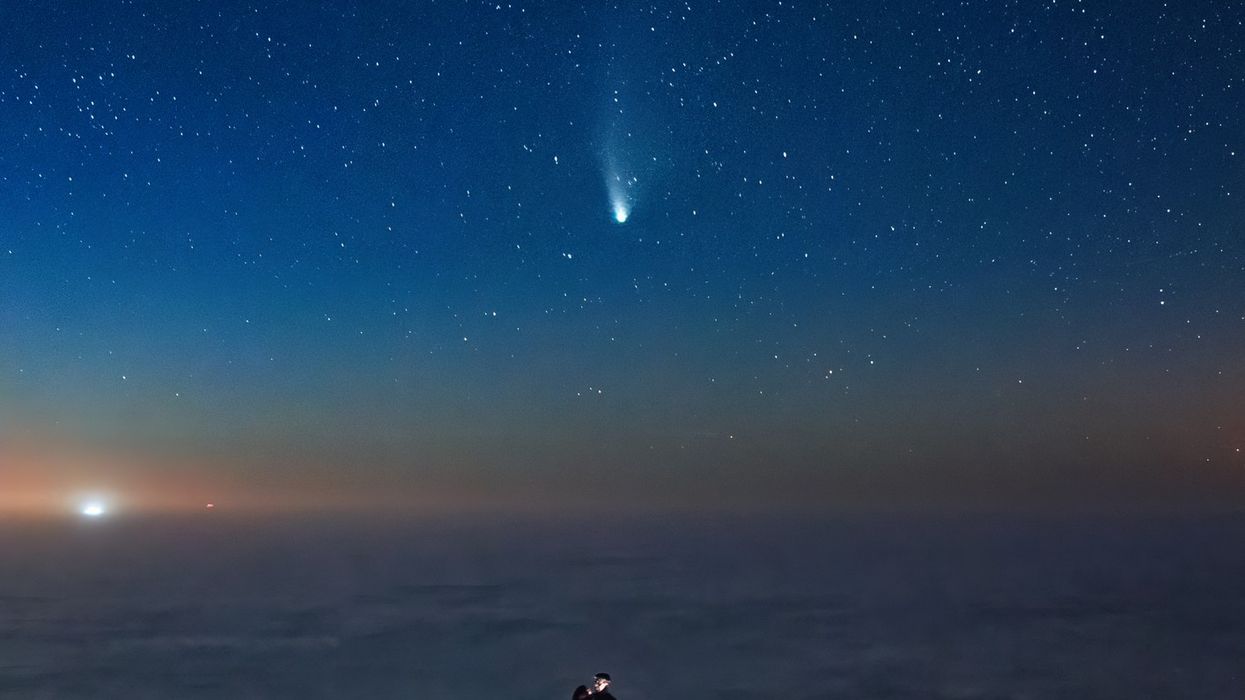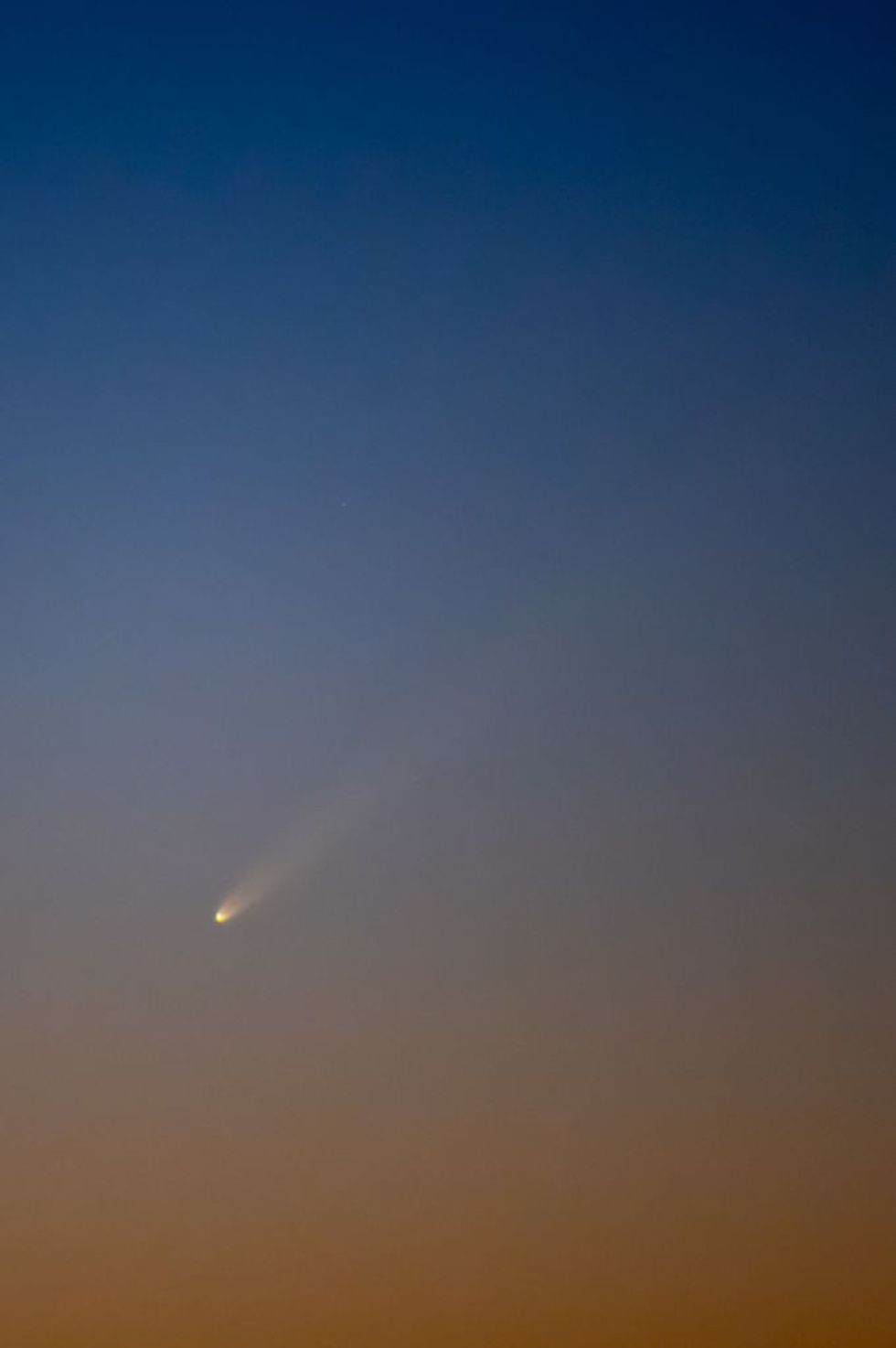'Comet of the century' to be visible for last time tonight before disappearing for 80,000 years

Tonight marks the final opportunity for stargazers to witness a rare celestial event
|GETTY

Comet A3's long tail of dust and ice is expected to be illuminated in blue and white hue
Don't Miss
Most Read
Tonight marks the final opportunity for stargazers to witness a rare celestial event.
Comet A3, also known as Tsuchinshan-ATLAS, will be visible to the naked eye for the last time before vanishing from our skies for 80,000 years.
The "once in a lifetime" spectacle offers a fleeting chance to observe a bright comet as it makes its approach to Earth.
The space rock, originating from the distant Oort Cloud, will come within 44 million miles of our planet this evening.
 Tonight marks the final opportunity for stargazers to witness a rare celestial event |
Tonight marks the final opportunity for stargazers to witness a rare celestial event | GETTY
Astronomers urge enthusiasts to seize the unique opportunity, as the comet will become increasingly difficult to spot in the coming days.
Stargazers can spot Comet A3 in the Ophiuchus constellation along the west-facing horizon. The celestial visitor will shine at a magnitude of +2 or +1, making it potentially visible to the naked eye.
The best viewing window is between October 12 and 13.
After this brief period, the comet will rapidly fade from view, becoming completely unidentifiable by 20 October.
LATEST DEVELOPMENTS:
This rare sighting follows the comet's previous appearance between September 27 and October 2, after which it temporarily vanished due to its proximity to the sun.
Experts recommend using a pair of stargazing binoculars to see the phenomenon. While visible to the naked eye, the comet may appear dimmer than expected.
Astronomy apps can provide detailed directions for locating the comet in the night sky. However, experts warn that cloud cover or moonlight might interfere with visibility.
Astronauts Matthew Dominick and Dom Pettit have already captured footage of the space rock from the International Space Station, demonstrating its visibility from space.

Comet A3, also known as Tsuchinshan-ATLAS, will be visible to the naked eye for the last time before vanishing from our skies for 80,000 years
|GETTY
Comet A3's long tail of dust and ice is expected to be illuminated in blue and white hues by the sun, creating a striking contrast against the night sky.
"Most comets don't normally get bright enough for someone to see with the naked eye," Erika Gibb, a professor of physics and astronomy at the University of Missouri - St Louis told National Geographic.
"We've got these beautiful comets that come through and we can't always observe and study all of them, just because of where they are in the sky."










